Romany Road Fountain
Introduction
Text-to-speech Audio
Installed in 1930, this shallow pool and fountain were the centerpiece of a sunken garden constructed to enhance the newly built neighborhoods surrounding Ward Parkway. While the stone pool exists in its original form, the fountain has been replaced multiple times due to vandalism. The present is a two-tiered pedestal fountain. A single jet spouts from the summit of the upper bowl while the perimeter of the lower bowl contains the faces of four cherubs in which water streams from their mouths. To the north and the south of the pool, the shallow stone walls of the sunken garden are still visible, though much of them are concealed by trees and shrubbery.
Images
Romany Road Fountain
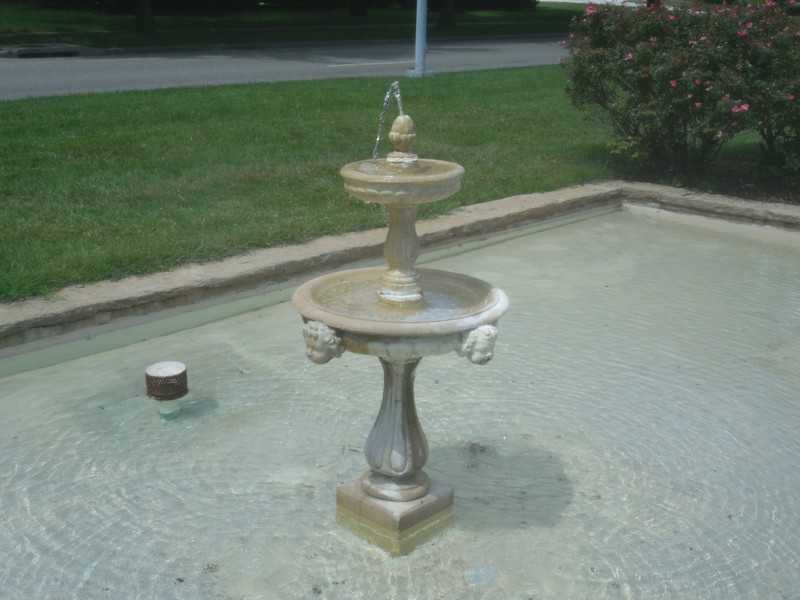
This stone pool was installed as part of a sunken garden in 1930.
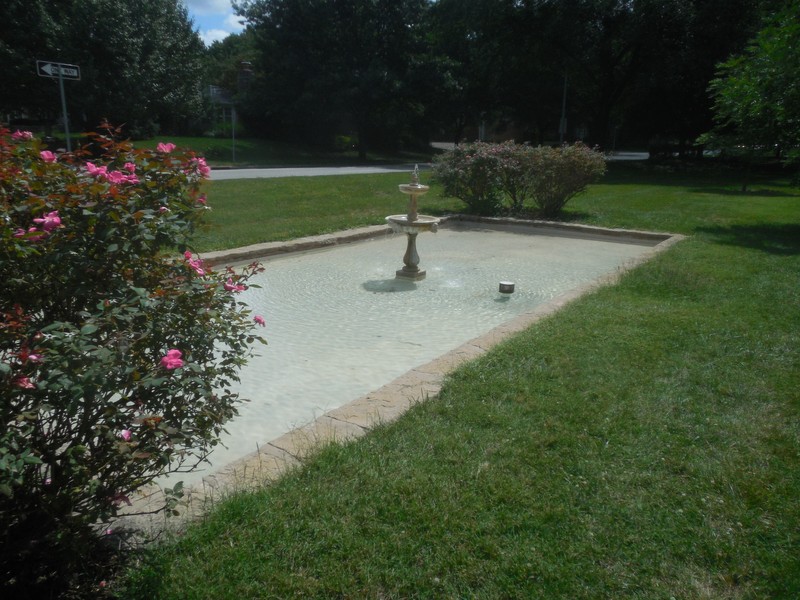
The present Romany Road Fountain features four cherub faces on the perimeter of the lower bowl.
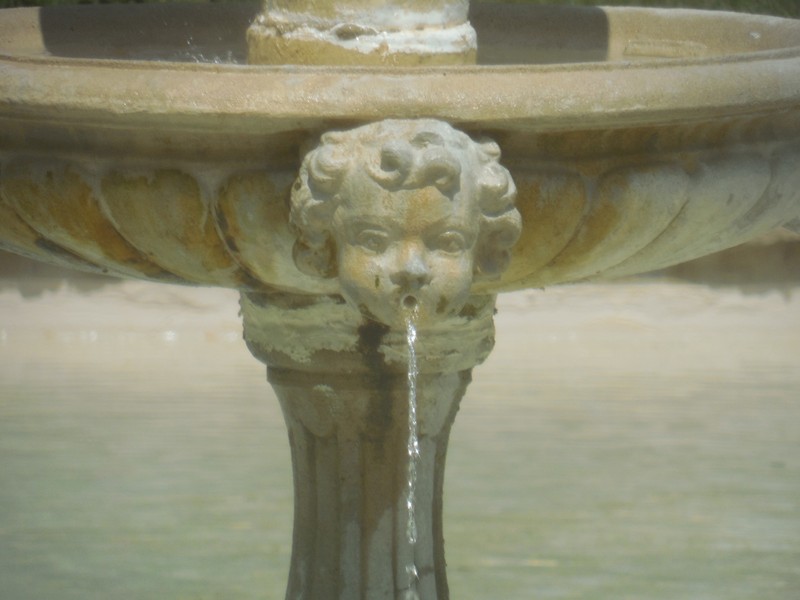
The original Romany Road Fountain (photo c.1932) featured a figure of a girl playing a double flute. Courtesy of Missouri Valley Special Collection, Kansas City Public Library, Kansas City, Missouri.
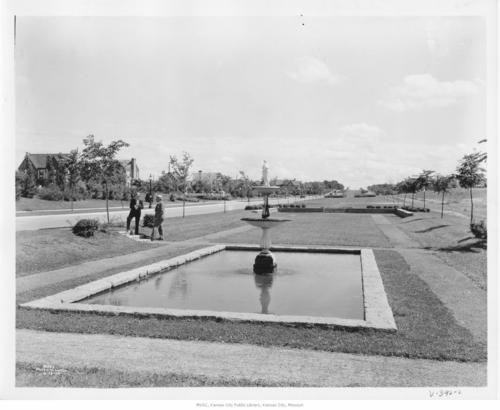
The second Romany Road Fountain featured the figure of a boy supporting the saucer.
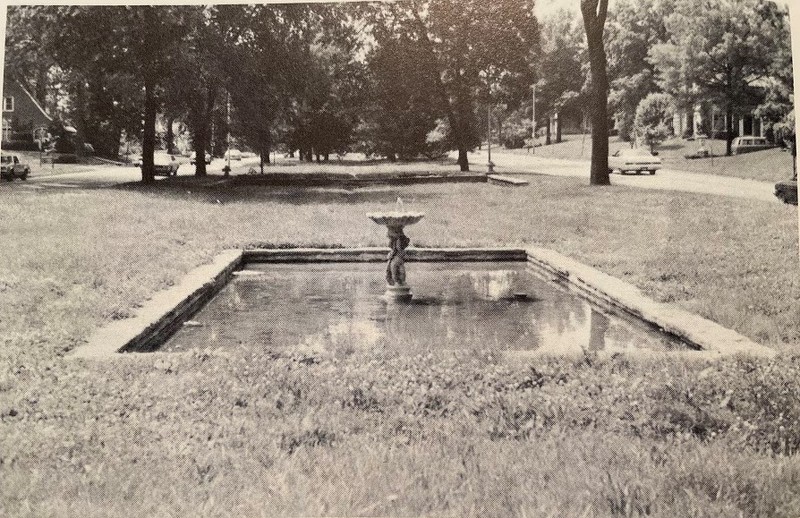
Backstory and Context
Text-to-speech Audio
Ward Parkway was constructed in 1913 as one of the first major thoroughfares designed by George Kessler as part of the Parks and Boulevards System. These routes were constructed following the natural, stony terrain of the city, and landscaping and statuary were a significant part of the movement. In 1923, the land surrounding Ward Parkway from 67th to 71st Street was acquired by the J.C. Nichols Company for planned residential development. It remained vacant for some time but was developed in the following decade into the Romanelli Gardens neighborhood, with the subdivisions known today as Armour Fields (to the east) and Romanelli West (to the west).
Located in the median of Ward Parkway, the sunken garden was constructed of shallow stone walls to both the north and south of a central pool. The original design featured lion figures placed at the north end and antique stone baskets imported from Budapest at the south, with steps on each side leading down to a courtyard surrounding the pool. Though the walls are still visible, trees and shrubbery have since been planted, concealing them into the landscape.
In the center of the 16-foot by 36-foot rectangular, stone pool, the original water feature installed in 1930 was a fluted pedestal fountain containing two saucers and a slender figure of a girl playing a double flute. Due to vandalism, that fountain was later replaced with a single, scalloped bowl being lifted up and supported by a child, with a single jet spraying from its center. Sometime in the late 1900s it was replaced again with the present, two-tiered pedestal fountain with the cherub-faced basin.
The Romany Road Fountain is one of the few remaining Kansas City fountains that are non-recirculating, draining directly into the sewer. Because of this primitive draining system, in early 2022 the city elected to turn off this fountain, and others alike, in an effort to conserve water.
Cite This Entry
Stahly, Nichole. "Romany Road Fountain." Clio: Your Guide to History. October 27, 2022. Accessed March 21, 2025. https://theclio.com/entry/158286
Sources
Romany Fountain, City of Fountains Foundation. Accessed October 27th, 2022. https://cityoffountains.org/romany-fountain/.
Piland, Sherry. Uguccioni, Ellen J.. Fountains of Kansas City: A History and Love Affair. Kansas City, MO. City of Fountains Foundation, 1985.
Armour Fields Homes Association. Accessed October 27th, 2022. http://www.armourfields.org/default.html.
Fitzpatrick, J., Ball-Edson, J.. Personal communication, October 2022.
https://cityoffountains.org/romany-fountain/
https://cityoffountains.org/romany-fountain/
https://cityoffountains.org/romany-fountain/
https://kchistory.org/image/ward-parkway-3
"Fountains of Kansas City" by Sherry Piland

